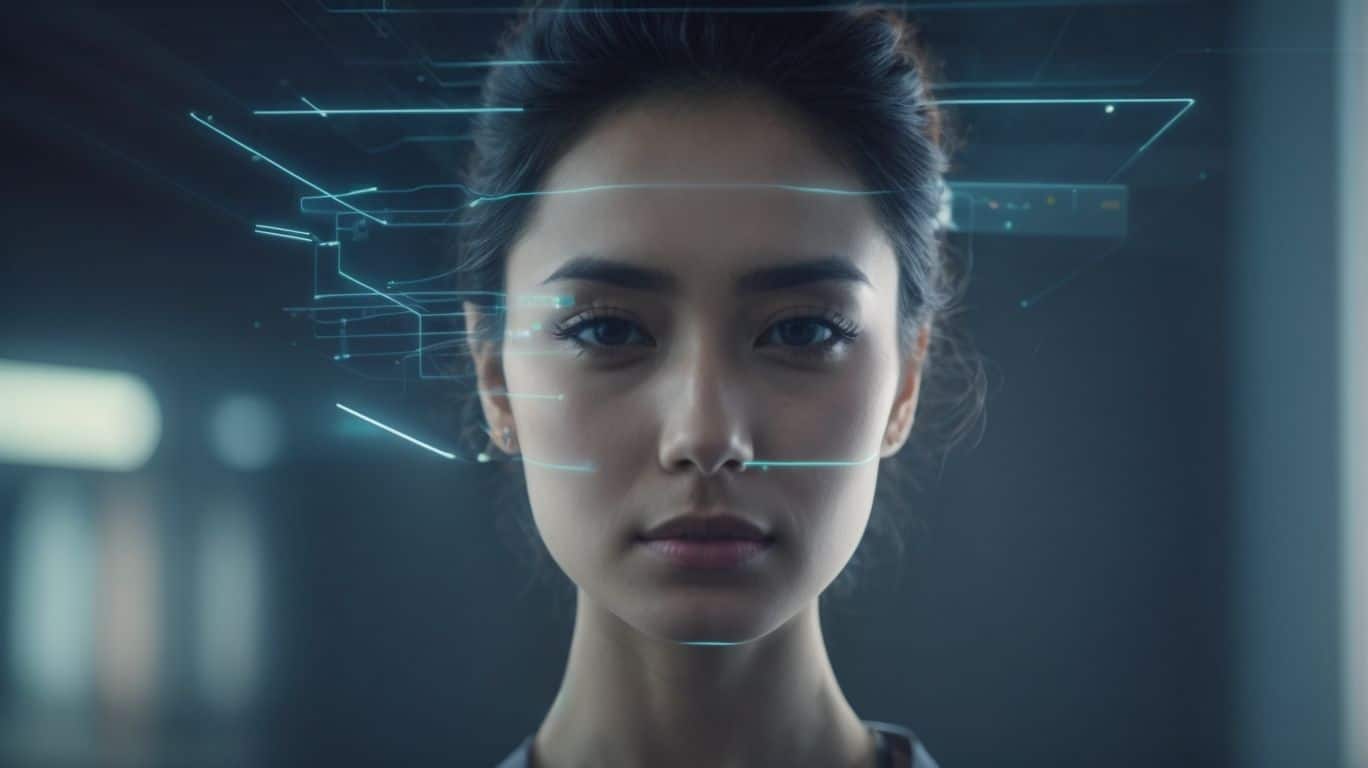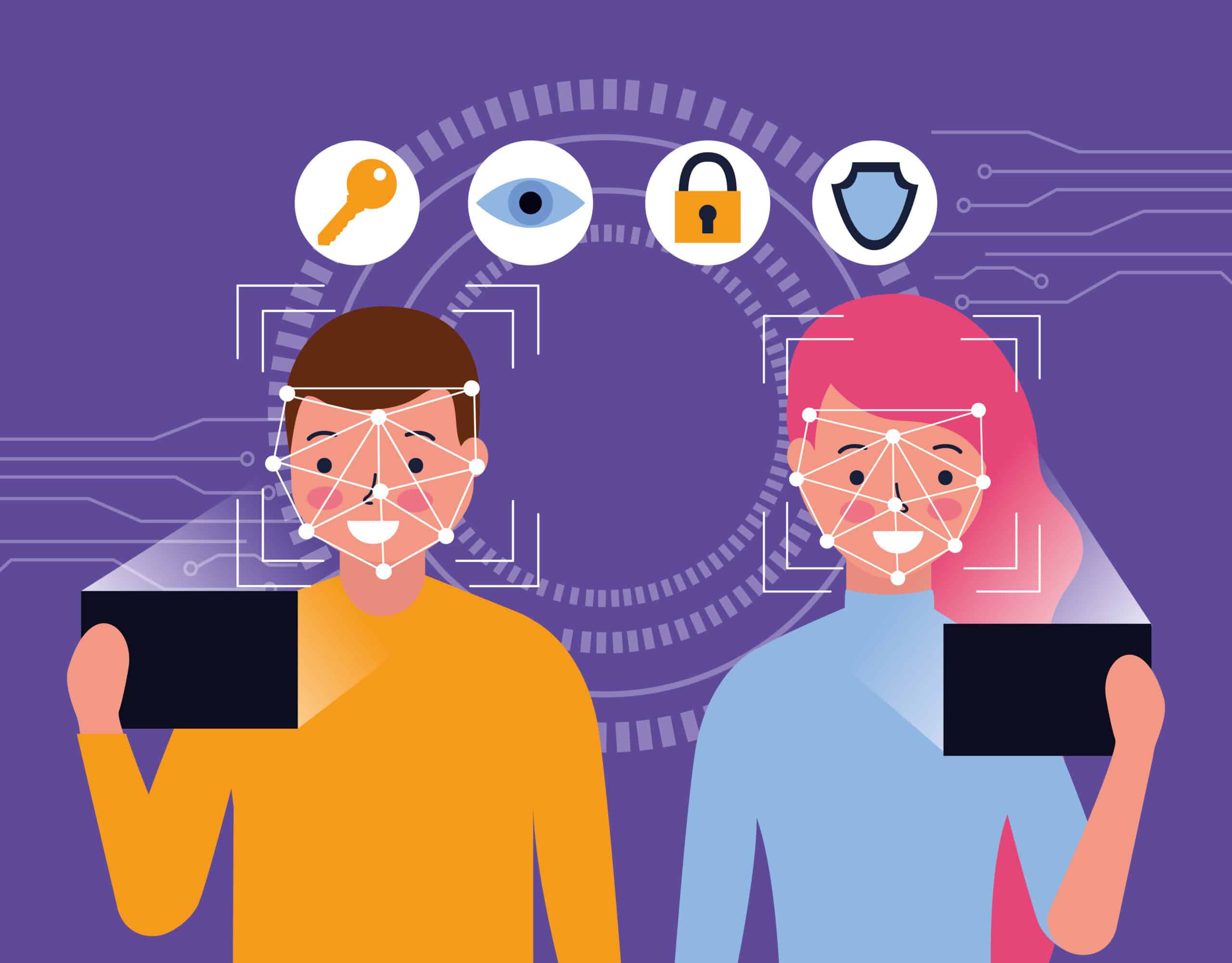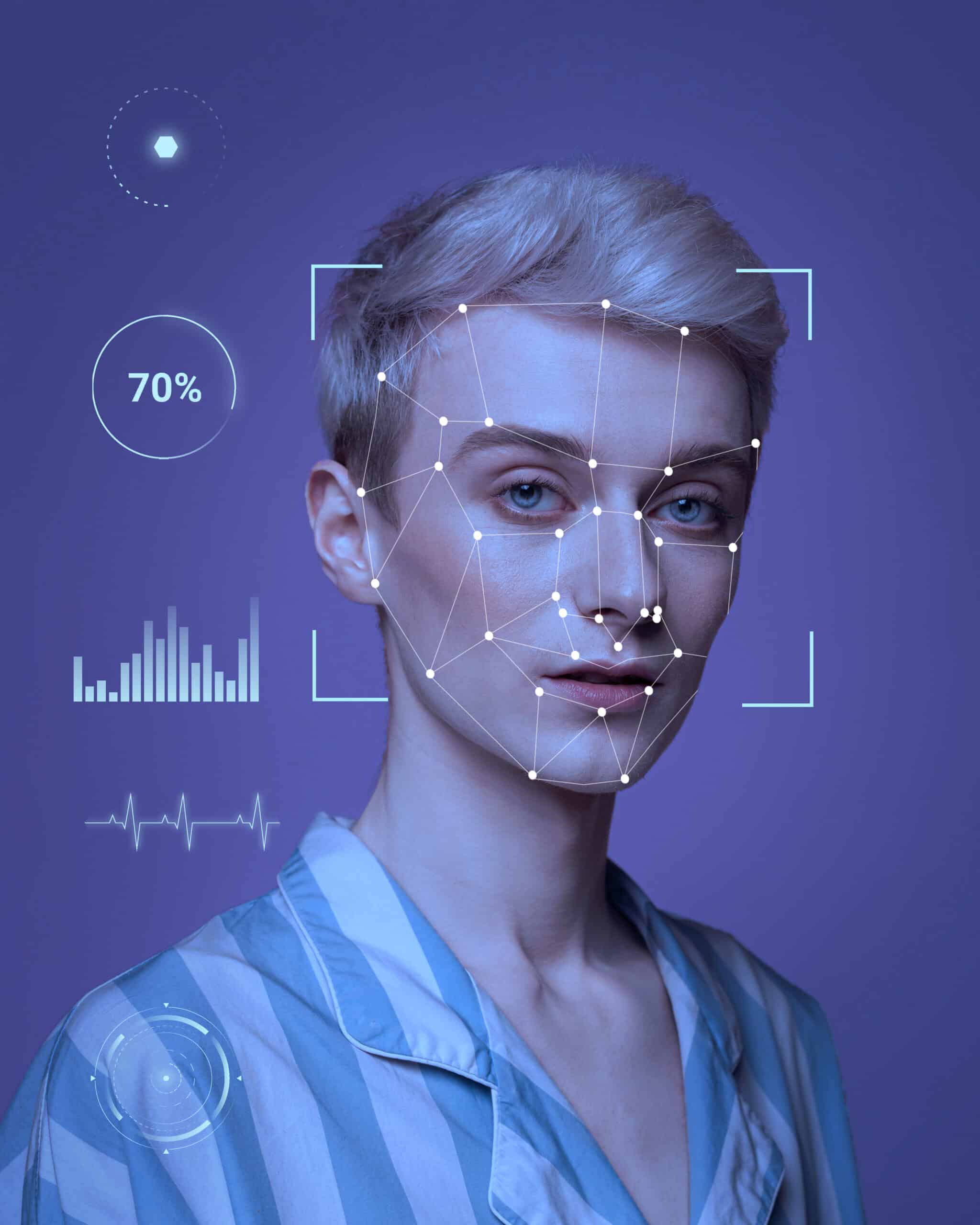Revolutionizing Security: Facial Recognition Identity Verification Technology


Facial recognition technology has revolutionized the way we verify identities and enhance security measures. This article explores facial recognition verification technology, how it works and why it is crucial in today’s digital world. The discussion covers the benefits and limitations of this cutting-edge technology, from biometric authentication to the various types of facial recognition technologies.
Learn about its applications in border control, banking, law enforcement, and personal device security, as well as the advancements and potential ethical implications shaping the future of facial recognition identity verification.
What is Facial Recognition Technology?
Facial Recognition Technology refers to the biometric process of identifying or verifying an individual’s identity using their facial features.
By analyzing unique characteristics such as the distance between a person’s eyes, nose shape, and facial contours, facial recognition technology creates a digital profile for each individual. The system compares this data with existing databases for identity verification purposes, enabling secure access to devices, facilities, or information. Biometric authentication through facial recognition has gained popularity due to its convenience and accuracy in distinguishing individuals, offering a seamless and efficient way to confirm identities in various settings.
How Does it Work?
Facial Recognition Technology works by capturing and analyzing facial features through a series of algorithms and processes to create a unique digital identity profile.
This process typically begins with the facial feature capture stage, where cameras or sensors acquire a digital image or video of a person’s face. Once the system obtains the image, it identifies key facial landmarks such as the eyes, nose, and mouth. These landmarks are then analyzed using sophisticated algorithms to extract unique facial characteristics like the distance between features, the shape of the face, and skin texture.
These extracted features are converted into mathematical representations, known as faceprints or facial templates, which are used for comparison and matching in facial recognition systems.
Why is Facial Recognition Identity Verification Important?
Facial Recognition Identity Verification plays a crucial role in enhancing security measures and providing accurate user authentication in various applications.
Utilizing advanced technology, facial recognition serves as a powerful tool in bolstering security solutions across industries such as banking, healthcare, and law enforcement. Its seamless integration with identity management systems ensures a smooth and precise verification process, reducing the risk of unauthorized access or fraudulent activities.
By accurately verifying the identity of individuals through their unique facial features, organizations can establish a robust security infrastructure that safeguards sensitive data and confidential information. This innovative technology not only enhances security protocols but also streamlines user authentication processes, optimizing operational efficiency and ensuring a seamless user experience.
The Need for Secure Identification
The growing need for secure identification methods has propelled the adoption of facial recognition technology as a reliable and efficient solution.
Facial recognition technology is increasingly being embraced across various sectors due to its ability to provide secure access and enhance data protection measures. With the rise of cyber threats and identity theft, organizations are turning to facial recognition as a way to strengthen their authentication processes. By utilizing biometric data such as facial features, this technology offers a more robust and reliable method of verifying individuals’ identities, reducing the risk of unauthorized access to sensitive information. The seamless integration of facial recognition in devices and systems makes it a convenient and user-friendly solution for ensuring secure interactions.
The Rise of Biometric Authentication
Biometric authentication, especially through facial recognition systems, has witnessed a significant rise due to its accuracy and advanced security measures.
Facial recognition systems offer a seamless and reliable way to verify one’s identity by analyzing unique facial features, thereby ensuring a robust layer of security for various applications. The utilization of biometric data in facial recognition enhances the authentication process, making it difficult for unauthorized access to occur. This heightened level of security has found great utility in enabling secure transactions, whether in banking, mobile payments, or access control systems. By incorporating facial recognition technology, businesses and organizations can streamline processes while maintaining data protection and reducing the risk of fraud.
How Does Facial Recognition Identity Verification Work?
Facial Recognition Identity Verification functions by comparing captured facial data with stored templates to authenticate or identify individuals accurately.
This authentication process involves a series of steps to ensure precise identity validation. The facial recognition software captures the unique features of an individual’s face, such as the distance between the eyes, nose shape, and facial contours. Next, this data is compared with existing templates in the system to find a match. The system then analyzes the similarities and variances between the captured image and the stored templates to determine the accuracy of the identification. By meticulously examining these facial details, the verification process aims to provide a highly secure method of confirming an individual’s identity.
Facial Recognition Algorithms
Facial Recognition Algorithms are the core components that drive the accurate analysis and comparison of facial features for identification purposes.
These algorithms play a crucial role in the field of facial biometrics, as they enable computers to identify and verify individuals based on their unique facial characteristics. By utilizing advanced technology, facial recognition algorithms can process vast amounts of facial data quickly and efficiently, ensuring precise authentication. This technology is especially valuable in secure systems such as border control, banking, and law enforcement, where accurate identification is paramount for maintaining safety and security.
Biometric Data Collection
Biometric Data Collection involves the systematic gathering of unique biological characteristics such as facial features for user authentication purposes.
This process typically starts with the enrollment phase, where an individual’s biometric data is initially captured and stored securely. The acquisition of facial features for identity recognition involves technologies like facial recognition software that analyze various parameters such as the distance between facial landmarks.
These distinct characteristics are then converted into digital templates for comparison during subsequent authentication attempts. By using these biometric traits, organizations can ensure a higher level of accuracy and security in verifying the identity of individuals accessing sensitive information or resources.
Types of Facial Recognition Identity Verification Technologies
Various types of Facial Recognition Identity Verification Technologies exist, including 2D and 3D recognition systems, each offering unique capabilities for user authentication.
2D facial recognition technology relies on analyzing images based on height and width, recognizing patterns in a two-dimensional space. This technology is widely used in mobile devices and digital platforms for fast and convenient identity verification.
On the other hand, 3D facial scanning technology adds depth to the recognition process, capturing detailed facial contours and features to create a more accurate biometric profile. This advanced system provides enhanced security measures, making it ideal for high-security applications such as border control and financial transactions.
2D vs 3D Facial Recognition
The comparison between 2D and 3D Facial Recognition Technologies reveals differences in depth perception and accuracy, influencing their suitability for various applications.
While 2D facial recognition primarily relies on analyzing two-dimensional images, which can sometimes struggle with accuracy due to factors like lighting conditions and angles, 3D facial recognition technology captures facial features in three dimensions, allowing for a more robust and accurate identification process. In terms of security risks, 3D facial recognition excels in scenarios where high-level security is necessary, as it provides a more detailed analysis of facial structures, making it harder for unauthorized access compared to 2D recognition systems.
Facial Recognition Software vs Hardware
The choice between Facial Recognition Software and Hardware solutions impacts the efficiency and deployment flexibility of identity verification systems.
- Facial recognition software, being more versatile in terms of integration with existing systems, allows for quicker and seamless deployment in various secure environments.
- On the other hand, facial recognition hardware provides enhanced accuracy and reliability due to its dedicated processing power and specialized components.
In terms of technology trends, software solutions are continuously evolving to incorporate advanced features like machine learning and cloud connectivity, whereas hardware options offer robust performance in high-demand scenarios. Organizations must carefully consider their specific needs and the environment in which the system will operate to make an informed decision between the two options.
Benefits and Limitations of Facial Recognition Identity Verification
Facial Recognition Identity Verification offers numerous advantages in enhancing security measures and user convenience, but it also presents certain limitations and concerns that need to be addressed.
In the realm of fraud prevention, facial recognition technology has proven to be a valuable tool, as it provides an additional layer of security by accurately verifying an individual’s identity. This feature not only helps in reducing the risk of unauthorized access and identity theft but also streamlines processes for users by eliminating the need for cumbersome authentication methods like passwords or PIN codes.
One of the challenges associated with facial recognition is the potential for biases and privacy concerns, requiring continuous refinement and strict adherence to data protection regulations.
Advantages of Facial Recognition Technology
The adoption of Facial Recognition Technology brings forth benefits such as enhanced security, streamlined access control, and efficient user verification processes.
By utilizing facial detection capabilities, organizations can better safeguard their premises by accurately identifying individuals entering restricted areas. This technology not only enhances security measures but also offers a seamless access control system, reducing the need for physical keys or ID cards. The implementation of facial recognition contributes to elevated levels of identity protection, as biometric data is highly secure and cannot be easily replicated or stolen.
Concerns and Limitations
Despite its advantages, Facial Recognition Technology raises concerns regarding privacy issues, potential security risks, and the accuracy of identification validation.
- User privacy is a significant consideration when it comes to the widespread use of facial recognition technology. The collection and storage of biometric data raise questions about who has access to this information and how it can be used. Security challenges such as data breaches and hacking threats pose a serious risk to the integrity of facial recognition systems.
- Accuracy in identification processes is crucial, as false matches can lead to erroneous outcomes and potential harm to individuals. Addressing these concerns is essential to ensuring the responsible and ethical deployment of facial recognition technology.
Applications of Facial Recognition Identity Verification
Facial Recognition Identity Verification finds wide applications in sectors such as border control, banking, law enforcement, and personal device security, enhancing operational efficiency and security measures.
- In border control, this technology helps swiftly process traveler identities, strengthening national security by accurately verifying individuals.
- Financial institutions rely on secure solutions like facial monitoring to combat fraudulent activities, preventing unauthorized access and ensuring safe transactions.
- Law enforcement agencies leverage facial recognition to identify suspects and locate missing persons efficiently.
- In personal security, facial recognition enhances device protection by offering convenient and robust verification methods, safeguarding sensitive data from unauthorized access.
Border Control and Airport Security
Facial Recognition Technology plays a vital role in border control and airport security by facilitating rapid identification processes and enhancing surveillance capabilities.
This technology utilizes advanced facial matching and identification technology to quickly compare the faces of individuals against a database of known persons, enabling border officials and security personnel to efficiently identify and track suspicious individuals.
Through the use of facial recognition, airports can streamline passenger check-in processes, enhance security screening procedures, and monitor the movements of individuals within the premises in real-time. This not only helps in improving overall security measures but also provides a more seamless and efficient travel experience for passengers.
Banking and Financial Services
In the banking and financial sector, Facial Recognition Technology enables secure transactions, fraud prevention, and precise customer authentication, bolstering overall security protocols.
By integrating biometric recognition technology, financial institutions can enhance customer experience by minimizing the need for multiple authentication steps. This technology allows for seamless and efficient transactions, reducing the risk of unauthorized access. The use of facial recognition in secure applications ensures that only authorized individuals can access sensitive financial data or perform transactions. This level of security not only protects customers from potential fraud but also boosts the credibility and trustworthiness of financial institutions in the digital age.
Law Enforcement and Public Safety
Law enforcement agencies leverage Facial Recognition Technology to aid in criminal investigations, enhance public safety, and identify suspects through advanced facial analysis techniques.
This technology enables law enforcement to swiftly search through vast databases of facial images to match unidentified individuals with existing records, helping to track down suspects and solve crimes efficiently.
Facial recognition technology plays a crucial role in enhancing surveillance systems by automatically detecting faces in real-time video feeds, thereby assisting in monitoring public spaces and identifying potential security threats.
The widespread adoption of facial detection in law enforcement also raises concerns about privacy intrusion and security risks associated with the misuse of biometric data.
Personal Device Security
Personal devices are increasingly integrating Facial Recognition Identity Verification for secure user authentication, safeguarding sensitive data, and ensuring personalized access control.
This innovative technology utilizes advanced facial image processing algorithms to accurately identify individuals and grant access based on their unique facial features, offering a more convenient and reliable alternative to traditional password-based authentication.
By leveraging biometric credentials, users can enjoy an added layer of security that is difficult to replicate or compromise, leading to enhanced protection against unauthorized access and identity theft.
The incorporation of facial recognition technology not only enhances user privacy and security but also delivers a seamless and tailored user experience, making it a promising solution for ensuring secure and efficient access control in modern digital environments.
The Future of Facial Recognition Identity Verification
The future of Facial Recognition Identity Verification entails continuous technological advancements, addressing privacy concerns, and navigating potential ethical and legal implications in the evolving security landscape.
As Facial Recognition Technology progresses, we can anticipate enhanced accuracy levels, improved speed in identity verification processes, and greater integration with various industries. Privacy considerations will remain a focal point, with ongoing debates surrounding data protection, consent, and transparency. Ethical and legal challenges, such as biases in algorithms, misuse of data, and regulatory frameworks, will play a significant role in shaping the future trajectory of this technology. Striking a balance between security measures and individual rights will be crucial for its ethical and effective implementation.
Advancements in Technology
The advancements in Facial Recognition Technology continue to refine authentication processes, enhance accuracy, and expand secure applications, paving the way for more sophisticated identification solutions.
User verification through facial recognition technology has seen significant progress in recent years. The precision in identifying individuals has improved substantially, allowing for seamless and secure authentication methods. The evolution of technology trends has led to the integration of facial recognition in various industries, from banking to healthcare, revolutionizing how user identities are verified. These advancements not only provide enhanced security measures but also offer convenience and efficiency in accessing personal accounts and information.
Potential Ethical and Legal Implications
The widespread adoption of Facial Recognition Technology raises ethical and legal concerns related to user privacy, data protection, and algorithm biases, necessitating comprehensive regulatory frameworks and accountability measures.
Facial recognition innovations have sparked debates on the balance between security and individual rights. The potential for privacy violations is a significant issue, as the technology can track individuals without their consent.
This raises questions about consent and the collection of personal data, especially when it comes to sensitive information like biometric data. The risk of data breaches and unauthorized access to facial recognition databases highlights the urgent need for secure data protection measures to prevent misuse and potential harm to individuals.
Frequently Asked Questions
What are facial recognition identity verification technologies?
Facial recognition identity verification technologies are advanced security solutions that use biometric authentication to identify an individual based on their facial features. It is a form of biometric technology that compares images of a person’s face to stored images in a database to confirm their identity.
How do facial recognition identity verification technologies work?
Facial recognition identity verification technologies work by capturing an image or a video of a person’s face and analyzing it to extract unique facial features such as the distance between the eyes, nose, and mouth. These features are then compared to a database of stored images to confirm the person’s identity.
What are the benefits of using facial recognition identity verification technologies?
There are several benefits of using facial recognition identity verification technologies. These include enhanced security, improved accuracy, and convenience for users. These technologies also offer a faster and more efficient way of verifying identities, reducing the risk of fraud and identity theft.
How reliable are facial recognition identity verification technologies?
Facial recognition identity verification technologies have significantly improved in reliability over the years. With the advancements in technology, these solutions have become highly accurate in identifying individuals. However, like any other technology, there is always a margin of error, and it is important to have a backup system in place.
Can facial recognition identity verification technologies be used for surveillance purposes?
Facial recognition identity verification technologies can also be used for surveillance purposes. These technologies can be integrated with CCTV cameras to monitor individuals in public spaces and identify potential threats. However, organizations must follow strict privacy laws and regulations when using these technologies for surveillance.
What are some potential concerns with facial recognition identity verification technologies?
Some potential concerns with facial recognition identity verification technologies include privacy issues, potential biases in the technology, and the possibility of misuse or abuse. It is crucial for organizations to have proper protocols and regulations in place to address these concerns and ensure responsible use of these technologies.



